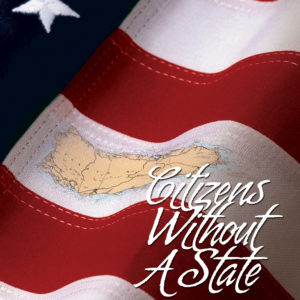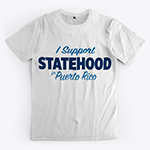Teaching for Change produces a reader for middle and high school kids, titled Caribbean Connections: Puerto Rico. It’s edited by Marilisa Jiménez García and is available online for free. It includes contributions from many Puerto Rican authors, in five sections:
- Part One: History and Geography
- Part Two: Identity
- Part Three: Government, Economy and Civic Life
- Part Four: Land and Environment
- Part Five: Culture and Traditions
We are excited to see new educational materials about Puerto Rico. There is a lack of teaching materials for secondary schools that even mention Puerto Rico. Caribbean Connections: Puerto Rico is a rich source of readings, teaching ideas, and classroom materials on Puerto Rico and the Puerto Rican diaspora.
Errors and omissions
Caribbean Connections does not pretend to be unbiased; there is a clear political agenda. However, it also contains plenty of factual errors relating to Puerto Rico’s political status. For example, the introduction to the first section contains this statement about Puerto Rico: “Political Status: Territorial possession of the U.S. officially recognized as a freely associated state.” In fact, Puerto Rico is an unincorporated territory, not a freely associated state. The freely associated states (FAS) are Palau, the Marshall Islands, and the Federated States of Micronesia. This is not a matter of opinion. The three FAS are independent nations which have Comapcts of Free Association with the United States. This is completely different from the status of Puerto Rico.
The historical overview is excerpted from book written in 1998. In a section headed, “The Future,” the author mentions the plebiscites of 1967 and 1983, and concludes with, “Although Representative Don Young (R-Alaska) introduced a bill in the U.S. House of Representatives (H.R.856) to bring the U.S. closer to a national discussion of the future status of Puerto Rico, this dialogue has seen little movement.” While that might have been adequate in 1998, this third edition of the book was published in 2020, at which point that statement was clearly false. There had already been two more plebiscites by that time and there have now been two more, in all of which voters choose statehood. Puerto Rico officially demanded statehood in 2018, and it is disingenuous to omit that information from a discussion of Puerto Rico’s history.
That section is followed by “Important Dates in Puerto Rican History,” which goes as far as 2020 but does not report any of the plebiscites.
In a lesson on Hamilton, the author writes of “the Jones Act, which allows Puerto Rico to only trade with the U.S. and limits the relief they can receive from other nations, even in the event of a disaster.” This is a false description of the Jones Act, which requires ships carrying cargo from one U.S. port to another to be U.S. ships. By no means does it require Puerto Rico to trade only with the U.S. or keep ships from other nations from docking in Puerto Rico.
Errors like these are not questions of interpretation or opinion. They are false information and should have no place in the classroom.
The status question
We enjoyed the literature selections, but we are most concerned with the question of political status, so we were glad to see that the topic is not ignored in Caribbean Connections. The section called “Overview of Puerto Rico’s Political Status Question” is a set of three essays published in 2002 in the Orlando Sentinel.
Manuel Rodríguez Orellana of the Puerto Rico Independence Party describes independence. “Colonialism constitutes a denial of fundamental human rights. Most arguments advanced against Puerto Rico’s inalienable right to independence are remnants of the Cold War. In the past decade, smaller and poorer nations have fared economically much better than Puerto Rico,” he writes.
Sila M. Calderón, former governor of Puerto Rico, represents “commonwealth”. “Commonwealth has been a vehicle for allowing our distinct national identity and cultural personal- ity to flourish, while retaining the U.S. citizenship we treasure,” she writes. “This requires freeing it from some federal policies that are good for the 50 states, but that have an undesirable impact upon the island.”
Carlos I. Pesquera, former president of the New Progressive Party, wrote about statehood. “In 1917, Congress made people born on the island members of the American body politic,” he writes. “Not all Puerto Ricans, however, are allowed to enjoy their citizenship to its fullest. Those who live in Florida and the other states are equal under the law with all their fellow citizens. However, it is a sad fact that Puerto Ricans liv-ing on the island cannot participate fully in our American society, with complete rights and duties.”
We appreciate the presentation of the three status options, though it would have been more accurate to say, as the federal government has, that the “commonwealth” option is the current territorial status. Persuasive essays from more than a decade ago do not present the current state of the status debate.
Fourth edition?
We’ve reviewed the third edition, but it would make sense to produce a fourth edition with corrections and updates.







No responses yet